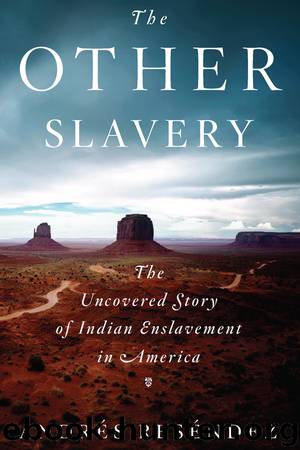The Other Slavery by Andrés Reséndez

Author:Andrés Reséndez
Language: eng
Format: epub
Publisher: Houghton Mifflin Harcourt
American Ranchers
Calhoun merely tolerated the other slavery of the West, but other Americans went several steps beyond that by actively practicing it and enshrining it in law. In the 1840s, colonists were attracted to California because of its broad valleys and booming ranching economy. There they found a baronial society that impressed them deeply. About one hundred Mexican families owned princely domains scattered from San Diego to San Francisco Bay. It is easy to imagine the rolling hills, the properties that in some cases extended all the way to the spectacular California coastline, and the large houses made of thick adobe walls. These houses were a curious combination of grandeur and lack of material comforts, however, as there were few possessions inside. These enormous ranches had originated in a well-meaning but ultimately disastrous order from Mexico City. In 1833 the Mexican government had mandated the dismantling of the Spanish missions that had long served as California’s social and economic backbone. Mission Indians were to receive plots of land, seeds, cattle, and tools. The predictable result, however, was a landgrab, as wealthy and well-connected individuals took the lion’s share of the land.10
In northern California, the personification of the ranching baron was a rotund man with bushy sideburns named Mariano Guadalupe Vallejo, or Don Guadalupe for short. As military commander, Don Guadalupe personally welcomed foreigners. He spoke French well and English tolerably (according to one discerning witness) and was quite gregarious. Indeed, Don Guadalupe invited recent arrivals into his home and displayed a hospitality that became legendary. The Vallejos killed cows and turkeys to feed guests and offered tamales and enchiladas liberally. After these meals, guitars were tuned, and singing and dancing could be expected. Englishmen, Americans, Frenchmen, Swedes, Swiss, and Russians all passed through the Vallejos’ casa grande in Sonoma.11
One of the first things visitors noticed at the Vallejos’ home was the ubiquitous crews of servants. In a custom reminiscent of the antebellum South, each of Don Guadalupe’s children, boys and girls, had a dedicated Indian servant. Don Guadalupe’s wife, Doña Francisca Benicia Carrillo, had two servants catering to her personal needs. Besides these personal valets, the Vallejos kept a sizeable staff around the house: five or six women grinding corn and making tortillas, six or seven laboring in the kitchen, “and though not learned in the culinary art as taught by Italian and French books, they made very palatable and savory dishes,” recalled Don Guadalupe’s younger brother, Salvador Vallejo. There were five or six women washing clothes and up to a dozen sewing and spinning. According to the younger Vallejo, it was not uncommon for wealthy Californians to keep retinues of twenty to sixty Indians.12
Download
This site does not store any files on its server. We only index and link to content provided by other sites. Please contact the content providers to delete copyright contents if any and email us, we'll remove relevant links or contents immediately.
The Secret History by Donna Tartt(16726)
The Social Justice Warrior Handbook by Lisa De Pasquale(11508)
Thirteen Reasons Why by Jay Asher(7835)
This Is How You Lose Her by Junot Diaz(5830)
Weapons of Math Destruction by Cathy O'Neil(5082)
Zero to One by Peter Thiel(4869)
The Myth of the Strong Leader by Archie Brown(4810)
Promise Me, Dad by Joe Biden(4481)
Beartown by Fredrik Backman(4466)
How Democracies Die by Steven Levitsky & Daniel Ziblatt(4450)
Stone's Rules by Roger Stone(4440)
The Fire Next Time by James Baldwin(4375)
100 Deadly Skills by Clint Emerson(4112)
A Higher Loyalty: Truth, Lies, and Leadership by James Comey(4061)
Rise and Kill First by Ronen Bergman(4049)
The David Icke Guide to the Global Conspiracy (and how to end it) by David Icke(3915)
The Farm by Tom Rob Smith(3896)
Secrecy World by Jake Bernstein(3811)
The Doomsday Machine by Daniel Ellsberg(3761)
